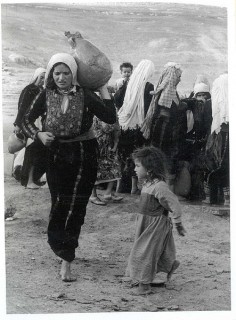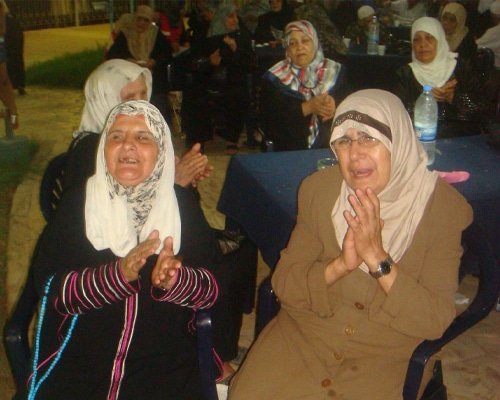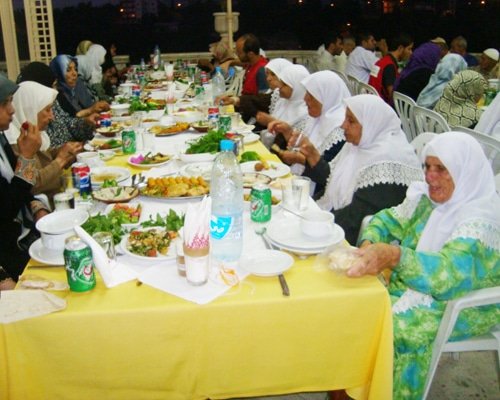Panicked Israeli leaders and their agents in Congress are busy trying to convince the American public how vital and cheap the $3 billion per year cost of Camp David is for America’s security while they know the truth is precisely the opposite.
By Franklin Lamb / STAFF WRITER
Beirut, Lebanon

The Tahrir Square “Hurriya!” tremors spreading across the Middle East may or may not be impacting today’s events in the historically liberal American state of Wisconsin and other areas of America, yet most of us would agree that the Tunisian-Egyptian revolutions are being felt far and wide and appear to be dramatically gaining steam. Lebanon’s Palestinian refugees camps are no exceptions.
Perhaps sooner rather than later, a half dozen or so Arab despots may reluctantly retire or leave for medical treatment in Saudi Arabia. Indeed some Saudis may themselves move to America to occupy their vast real estate holdings stateside, some located in largely Israeli duo-national neighborhoods, whose occupancy rates are also dramatically rising, as many in Israel sense that the CIA predicted collapse of their settler colony may be accelerating.
Also feeling the widening flood torrents are those depending on the 1978 Camp David Accords and its ‘Rosemary’s baby,’ the 1979 “Peace Treaty” that castrated Egypt, betrayed the Palestinians and ceded regional dominance to Israel for three decades. The White House reportedly is reconciled to the fact that Camp David may be ‘renegotiated’ but, like Israel, fears it may be frozen and indefinitely suspended if not scrapped completely in the coming months. This is part part of the re-ordering we are witnessing as the new era and indeed culture of resistance spreads.
Panicked Israeli leaders and their agents in Congress are busy trying to convince the American public how vital and cheap the $3 billion per year cost of Camp David is for America’s security while they know the truth is precisely the opposite. AIPAC has been saturating Capitol Hill this week as well as media outlets with its just released Red Alert! “Urgent Appeal” which reads as follows: “Please urge your House member to sign a letter to Secretary of State Hillary Clinton that urges all branches of the U.S. government to emphasize to prospective Egyptian leaders and opposition figures the importance of Egypt’s international obligations, specifically its Camp David peace treaty with Israel.”
Just yesterday, 2/18/11, the Palestinian UN delegation, in a rare display of back bone, presumably influenced by the revelations in the Palestine Papers, of treachery and resulting charges of treason, as well as Tahrir Square, joined the 130 UN Member co-sponsors of the UNSC Resolution and stared down Barak Obama and Ambassador Susan Rice and rejected their proposed gutting of the modest Security Council Resolution condemning Israeli settlements. Before the vote, threats were issued from the White House personally delivered to PA “President” Mahmoud Abass during a 40 minute reportedly tense telephone call from the President and before Abbass presumably recovered from that upbraiding, another one came from Hilary Clinton.
The British, Russian, and Chinese ambassadors were among those who rose to speak in favor of the failed resolution. Still, it was a rare 14-1 Security Council vote in solidarity with Palestine. It was also yet another American Veto, that for the 63rd time, signaled the American public and the World that under Congressional pressure, it is Israeli settlers inhabiting stolen land, not the American people or their values, that still prevail even as the US and Israel reap an Arab and Islamic awakening that is hastening their expulsion from the region. Just hours after the courageous UN vote, the new provisional government in Cairo announced the opening of Rafah crossing, if only on a limited basis-for now.
Symbolism is everywhere-and sometimes seemingly everything. Who would have thought that Egypt, just days after Mubarak’s recall, would welcome, for the first time since 1979, Iranian warships through the Suez Canal? When Iran’s ships arrive at Port Said they are expected to be greeted and perhaps feted by dock workers and the Egyptian public, despite Israeli threats and claims delivered by Foreign Minister Avigdor Lieberman that Iran’s use of the international waterway is “an hostile act” and “proves the Iranians are becoming more and more cheeky.”
Many Palestinians in Lebanon’s camps and communities, like the rest of us appear almost mesmerized by what’s been happening. A survey conducted by the Arab World for Research and Development (AWRAD), published on February 2, 2011 showed, that 74 percent of the Palestinians support pro-democracy protests in Tunisia, which toppled President Zine El Abidine Ben Ali. In Lebanon’s camps it appears that support for the Arab Awakening grows with each new revolt in the region.
They feel, as no doubt many who have been working for Palestinian civil rights in Lebanon for the past 20 years, including more than two dozen International and local NGO’s and civil society organizations, that the power of Tahrir Square will mean that Lebanon’s Palestinian refugees will at long last be granted the elementary, internationally mandated civil right to own a home and to work that every other refugee enjoys by law.
Stellar examples of the new Palestinian leadership in Lebanon’s camps pressing for civil rights include my best friend in Shatila Camp Zeinab al Hajj, born, raised and still living in Shatila Camp. And does she ever welcome western visitors whom she quickly converts to her cause! To arrive at Zeinab’s home/office and to learn about the Palestinian refugee’s urgent need for elementary civil rights, and why she and her friends believe the new Hezbollah led government, also inspired by Tahrir Square, will honor its moral, religious, legal and political obligations to achieve the right to work and home ownership, is simple enough.
The 14 member three generation Al Hajj family always welcomes foreign visitors into their three rooms and roof top space that overlooks the area of the camp where some of the most intense slaughter took place not only during the 1982 Sabra-Shatila Massacre, also during the 1985-88 camp wars when Shatila and Burj Barajneh camps were targeted for destruction by some factions who still today boast that Palestine is their blood stream cause. Indeed some of those who gave the orders to slaughter men, women and children in Shatila during the misnomered “camp wars’ ghoulishly have their photo-shop posters plastered around parts of the south end of Shatila camp.
Of course there were no “camp wars” but rather a series of intermittent slaughters of mainly unarmed civilians between 1985-88, allegedly to prevent the return of the PLO under Arafat’s leadership, until then Hezbollah spokesman, Subhi al-Tufayli (later Secretary-General between 1989-92) and others stepped in and demanded that President Hafez Assad of Syria put an end to the killing, declaring that Hezbollah was prepared to send fighters to defend the Palestinian camps. One can imagine what Palestinian families, nearly all of whom lost a relative at the hand of their Arab brothers, feel today about those smiling “solidarity” faces as they walk their children to school. Just seeing them plastered on poles and walls, is for this observer, enraging and the equivalent of seeing Ariel Sharon’s or Rafael Eitan’s bill boarded mugs inside Shatila camp.
To sit with and learn from ‘Miss International’, her friends and her elderly parents, who as children walked half a day into Lebanon from Safed in northern Palestine on May 12, 1948, all one has to do is enter Shatila Camp from the south, diagonal from what’s left of the Palestine Red Crescent Society’s Akka Hospital. Continue north along Rue Sabra toward what remains of the former Gaza PRCS Hospital. Gaza Hospital was for years, before the Palestinian Resistance departed in August of 1982, among the best equipped and administered hospitals in the Middle East. It was bombarded, destroyed and stripped of all its equipment during the Camp “Wars”, and the hospital’s shell is now home to roughly 1000 refugees who exist, packed into every room, hall way and alcove from the operating theater to the hospital morgue. Continue north past Martyr’s Cemetery where around 1000 unidentified victims of the Israeli sponsored 1982 Massacre at Shabra-Shatila are buried, one takes the third right down a narrow alley where the sun has not shown for 60 years. Step around the puddles of sewage and the ruts, watch out for dozens of beautiful children chasing and playing, or going or coming from the camps two UNWRA schools, avoid careening bikes and proud, if stressed, Palestinian women with shopping bags, sometimes balanced on their heads, and babies in their arms and you’ll find the cinder block hovel on your left next to a rusty zinc roofed shelter that camp residents avoid. The reason people don’t like to go inside the shelter is that 29 years ago the al-Hajj family allowed their neighbors to hide in their shelter during the 1982 massacre, as they themselves fled east to the then Algerian Embassy, across airport road from Shatila camp-currently the City Hall of the Hezbollah run Municipality of Ghouberi.
When the Hajj family returned to their home following the Massacre, they learned that all 17 neighbors using their shelter were slaughtered because the Israelis had given maps showing the exact location of the 11 shelters to the Phalange-Lebanese Forces militias. Zeinab, 7 years old at the time, recalls that she wanted to stay in the shelter and not flee because she planned to play with her dolls and her best friend Mona and they liked their private ‘hideout’ space. All 278 camp residents, with four exceptions, who entered the Israeli identified shelters in Shatila Camp were butchered between 6 pm Thursday and around midnight Friday, September 16-17, 1982.
Last night’s conversation, while enjoying a delicious bowl of hot Palestinian shorba prepared by Mrs. Hajj was about what Zeinab and her friends call the “Great Arab and Palestinian Awakening.” ‘What is happening? “Is it possible that Sykes-Picot’ off-spring can be liberated sooner rather than later?” Zeinab’s sister Suha, a nursing student at near-by Bahman hospital, scowled, referring to Israel.
Amidst the unfolding upheaval in the Middle East, some are expecting Lebanon’s Palestinian camps to erupt in revolt to protest economic and social conditions that are worse than any of the areas now in open revolt. If an eruption comes, it will be a quest for freedom, dignity and justice. Lots of meetings and discussions are being held but so far few signs of organizing mass demonstrations, although the current calm could abruptly shatter.
Zeinab’s friends are also more optimistic these days about the chances that they will finally be granted some elementary civil rights. The growing excitement appears to be fueled by the freedoms many camp residents predict in Tunisia and Egypt and perhaps throughout the region, but also as a result of the new government in Lebanon. The failure in Parliament last summer to achieve meaningful changes with respect to the right to work and to own a home in Parliament was a major disappointment in the camps, but with the new government hopes have risen.
Their growing zeal is made manifest in the quickly spreading activism among young Palestinians, being encouraged by their elders whose numbers comprise many sometimes honored, sometime seemingly forgotten, Palestinian resistance heroes who over the past half century helped earn the world’s recognition and increasing support of the Palestinian cause. I mean this reference to honor those, now middle aged, many sitting idly in the camps reminiscing and wondering what went wrong as they discuss latest developments such as the Palestine Papers, and who have struggled for so long to return to Palestine. Many from before the days when the arch Zionist Golda Meir could proclaim that “there are no such people as Palestinians” and much of the world’s media reflexively reported her lies as truth, and who have never compromised the principles which underpin the Palestinian struggle for justice. I recently met a man in Shatila Camp, who in 1950 in Gaza, worked with the Executive Committee of the Refugees’ Conference. This was of course 14 years before the founding of the PLO in Cairo. It was this Committee which led the first legislative council in Gaza in the early sixties, and sent the first Palestinian delegation of refugees to the United Nations in 1961.


Lebanon’s camps are full of aging heroes. Among them thousands of mothers who have suffered and achieved so much for their families, their cause and their country. Their progeny fill the teeming camps. There is a young Nelson Mandela in Rashedeyeh camp near Tyre. Another I met in Ein el Helwe appears to be a clone on Dalal Moughiby. In Nahr al Bared, still waiting to be rebuilt following its destruction in 2007, I watched a youthful Khalil al Wazir (Abu Jihad) explain his hopes to revive Palestinian resistance until liberation. In Wavall camp in the Bekaa I spent an evening with teenaged would-be Hassan Nasrallah who wants to help lead his people back to Palestine.
Like the streets of Cairo, Lebanon’s camps are starting to cry “Hurriya!” The camps here have birthed new leadership, aided by the old, that will anticipate that the new government will respect the words of the Resistance and enact in Parliament the full Right to Work and repeal the discriminatory 2001 law that criminalizes Palestinian home ownership.
Copyright FRANKLIN LAMB
| Palestinian Refugee Camps in Lebanon – 1999
|
||
|
|
|
|
| al@mashriq | ||
ATTENTION READERS
We See The World From All Sides and Want YOU To Be Fully InformedIn fact, intentional disinformation is a disgraceful scourge in media today. So to assuage any possible errant incorrect information posted herein, we strongly encourage you to seek corroboration from other non-VT sources before forming an educated opinion.
About VT - Policies & Disclosures - Comment Policy



